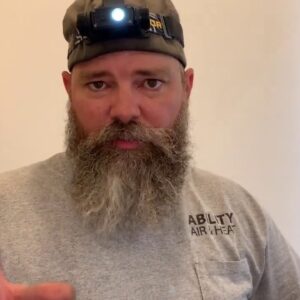Understanding Mini Split Pump Installation
Today, we delve into the often-confounding realm of mini split pump installation. A lot of individuals encounter challenges when setting up these devices, and understandably so, as the provided instructions frequently leave much to be desired. In this guide, we will navigate through the unboxing and installation process step-by-step for clarity.
Unboxing the Equipment
Let’s begin by unboxing our components to familiarize ourselves with their setup:
- Instruction Manual: A guide, albeit one that lacks detail.
- Hose: Connects the reservoir tank and the pump.
- Velcro Mounting Strips: Used for securing the reservoir in place.
- Drain Tube: Links the mini split’s drain to the reservoir.
- Reservoir: The vessel that collects drain water.
- Overflow Indicator: A sensor that signals when the reservoir is full.
- Pump: The powerhouse behind removing excess water.
Understanding Key Components
The Overflow Indicator
This small device houses several sensors. When water reaches certain levels, these sensors communicate with the unit, determining whether to pump water out or shut down due to overflow.
The Pump
It’s of paramount importance to grasp specific aspects of the pump, particularly if prior installations have resulted in malfunctions. Frequently, issues arise due to improper connections, often leading to the pump burning out.
Preparing the Pump for Installation
Before proceeding with the installation, you must remove the caps on the designated ports of the pump. These caps serve no purpose in our current setup and could hinder functionality.
Connecting the Tubing
The pump allows for flexibility in mounting; you can choose which port to connect your nylon tubing to, depending on your configuration. Ensure that when one port is in use, the other is securely capped. This prevents any water from escaping and causing a potential leak.
Important Safety Note: The Breather Tube
This tube is an essential feature. Its purpose is to maintain a higher elevation than the drain pan itself. If the drain pan were to overflow, not having this tube installed properly could result in water spilling onto walls and floors.
Wiring Setup
To ensure proper electricity flow, the first task is to route the wiring down through the allocated hole alongside the copper tubing.
Terminal Connections
Next, it’s crucial to connect the wires following the existing mini split configuration. Remember to turn off the power supply to prevent any unfortunate mishaps.
Voltage Configuration
Before anything else, ascertain whether the wiring is configured for 120 or 240 volts. We will be referencing the 220-volt section for our setup. The wiring diagram, albeit simplified, can obscure critical details.
Decoding the Wire Color Coding
Upon inspection, you’ll notice a wire that lacks a corresponding orange connection in the instructions—this is not a cause for alarm as it typically serves an alarm function. We will simply insulate it to prevent it from interfering with our setup.
Connecting Power to the Pump
Focus on ensuring that the pump receives a continuous power supply, essential for its operation. The brown wire will connect to the main power, and the ground wire must be secured accordingly. This setup guarantees that even when the reservoir fills, the pump remains powered and ready to function.
Executing the Installation
Now, as we finalize our setup, we’ll use some velcro to secure the reservoir to the designated position. Achieving a clean connection is crucial: ensure the hose connections are tight and free of any obstructions.
Final Touches and Testing
Utilize zip ties to keep the connections stable, assuring they won’t pop off under pressure. Once all components are assembled, it’s crucial to ensure that everything is functioning as intended.
Conclusion: Adhering to Instructions
In conclusion, this guide serves as a basic framework for installing a mini split pump. However, always refer to the specific instructions provided with your pump. Every model may have variances in wiring or component orientation. Ignoring these details may lead to improper setup, which could be both costly and time-consuming.
Take your time, read through each step methodically, and ensure that your installation is executed correctly. Remember, it’s always better to get it right on the first try than to find yourself troubleshooting the aftermath of a hasty installation.
Thank you for joining me on this installation journey. I hope this guide has illuminated the complexities of setting up your mini split pump and alleviated some of the confusion that can often accompany such tasks. Best of luck with your installation!

